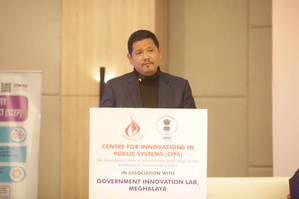Shillong, Jan 20, 2023, IANS

Shillong, Jan 20 (IANS) Meghalaya Chief Minister Conrad Sangma asserted that to bring down the high maternal and infant mortality rate, mothers and women were engaged in Self Help Groups (SHGs) in the hill state.
Speaking at an award ceremony here on Friday evening, Sangma said, “Addressing high maternal and infant mortality in the state, it was important to economically engage our mothers and women through SHGs and create an enabling environment for women in decision making realms at the grassroots.”
According to him, currently Meghalaya has 95 per cent households covered under SHGs.
The Chief Minister also mentioned that Meghalaya’s External Aided Project (EAP) funding demand has increased to Rs 12,500 crores from Rs 2500 cores in just 5 years.
“Meghalaya has come up to the level of larger states in terms of EAP funding requirement due to the fact that there is a strong manpower that is able to prepare Detailed Project Reports and adhere to the requirements of EAPs in a very short period of time,” he added.
Sangma stressed on the importance of working together as a team and the need to streamline and simplify rules and processes.
The award ceremony was organised by the Centre for Innovations in Public Systems (CIPS) in collaboration with the Government Innovation Lab (GIL) and Meghalaya state government.
The hill state also got two innovation awards in the event for public health management and drone delivery network in the state.
V.K Paul, Member of NITI Aayog, said that the official mandate of NITI Aayog includes two elements -- promoting cooperative federalism and competitive federalism.
“This award ceremony is more focused on the competitive federalism aspect. Meghalaya government has taken positive initiatives in promoting innovation in the public systems,” he said.
Paul also mentioned that the country is moving towards strengthening health systems through various National Programmes to reach the last mile of the population. He requested the policy practitioners and administrators to create a paradigm that would enable running hospitals in the public sector using the best systems of administration.